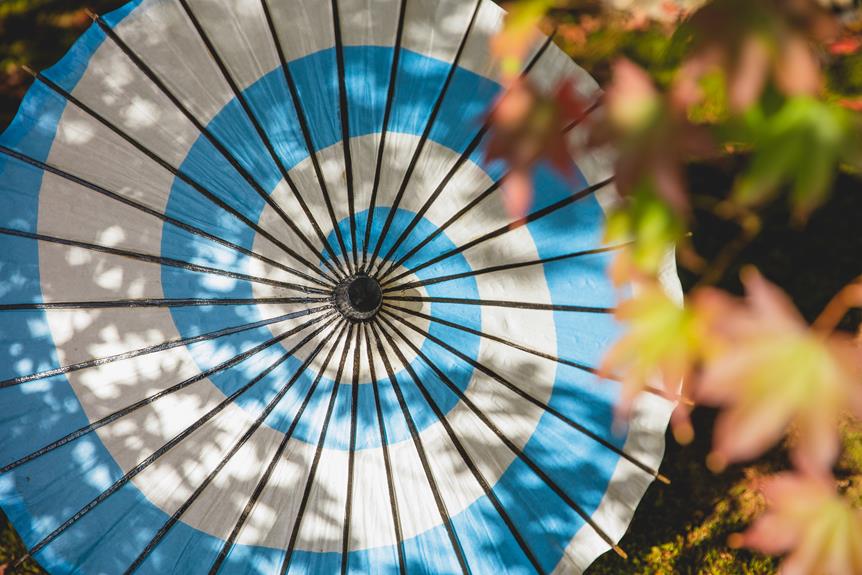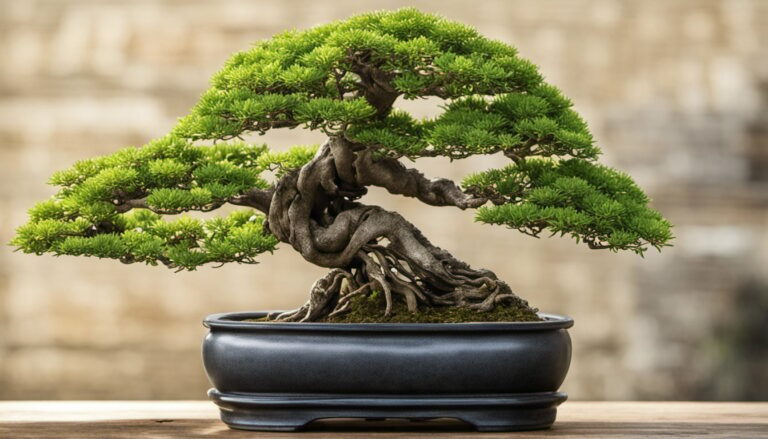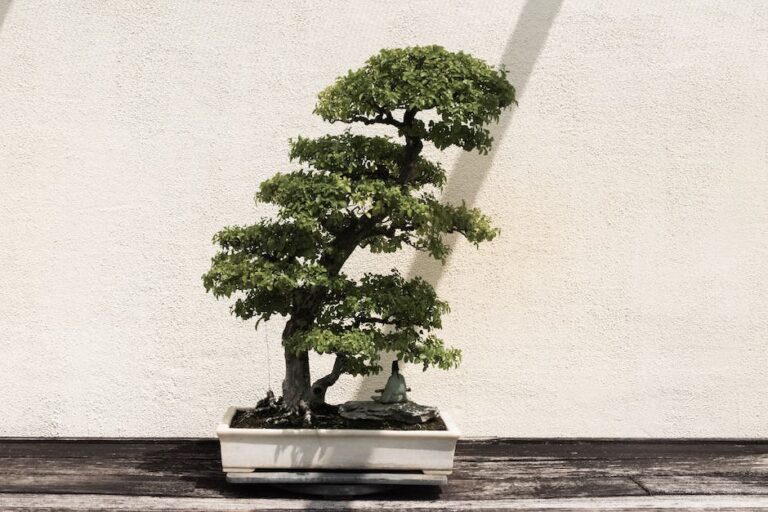Pruning and Shaping Japanese Maple Bonsai
In my view, the art of pruning and shaping Japanese Maple Bonsai is a journey into the heart of artistry and patience. It’s been my experience that these miniature marvels hold the potential to become living masterpieces, and in my opinion, it’s a journey worth embarking on.
As I see it, the delicate process of pruning and shaping is not just about horticulture but about sculpting a tree’s soul.
It’s clear to me that every cut and bend carries a story, and it’s a story I’m eager to share with you in this article. Join me as we explore the world of bonsai, one precise snip at a time.
Robins Thoughts
- Using sharp shears for careful branch trimming and root pruning promotes overall health and appearance
- The clip-and-grow technique and wiring with aluminum or copper wire allow for shaping and training of the trunk and branches
- Regular pruning helps maintain aesthetics, promotes growth, and removes dead or diseased branches
- Achieving balance and proportion through careful placement of branches and foliage, and regular assessment and adjustments, enhances the overall shape and composition of the bonsai.
Understanding the Growth Patterns of Japanese Maple Bonsai
You should observe the growth patterns of your Japanese Maple Bonsai. Understanding how your bonsai tree grows is crucial for its overall health and appearance.
When it comes to fertilization and nutrient management for Japanese maple bonsai, it’s important to provide the right balance of nutrients. Use a slow-release fertilizer specifically formulated for bonsai, and apply it during the growing season. Avoid over-fertilizing, as it can lead to weak growth or burning of the roots.
Additionally, training and wiring techniques are essential for shaping your bonsai. Regularly prune and wire branches to achieve the desired shape and form. Be careful not to damage the tree and always follow proper techniques.
Tools and Techniques for Pruning Japanese Maple Bonsai
To achieve the desired form, use sharp shears and carefully trim the branches of your Japanese maple bonsai. Pruning is an essential technique for maintaining the health and aesthetics of your bonsai tree.
Root pruning helps to keep the tree in a small container and promotes a strong root system. This should be done every two to three years, during the dormant period. It involves trimming the roots to prevent them from becoming tangled or circling around the pot.
Leaf pruning, on the other hand, is done to maintain the desired size and shape of the bonsai. It involves removing excess foliage to let light and air reach the inner branches. This should be done during the growing season, but be careful not to remove too many leaves at once, as it can weaken the tree.
Shaping the Trunk and Branches of Japanese Maple Bonsai
Achieving the desired form of your tree involves carefully guiding the growth of the trunk and branches.
When it comes to training techniques for Japanese maple bonsai, there are various options to consider. One popular method is known as the clip-and-grow technique. This involves selectively pruning the branches and allowing new growth to emerge, which can then be shaped and trained.
Another technique is called wiring, where aluminum or copper wire is gently wrapped around the branches and trunk, allowing you to bend and position them in the desired direction.
These techniques give you the flexibility to create various styles for your Japanese maple bonsai. You can opt for a formal upright style, with a straight trunk and evenly spaced branches, or a cascade style, where the branches cascade downwards.
Whatever style you choose, remember to be patient and consistent in your training efforts.
Pruning for Health and Vigor in Japanese Maple Bonsai
Maintaining the health and vigor of your tree is crucial for its overall growth and development. Pruning is an essential practice to promote growth and maintain aesthetics in your Japanese Maple Bonsai.
By removing dead or diseased branches, you allow the tree to focus its energy on new growth. Pruning also helps to shape the tree and maintain its desired form. When pruning, make clean cuts just above a bud or node to encourage new growth in that area.
Regularly inspect your bonsai for any signs of pests or diseases, as these can hinder its health and growth. Remember to sterilize your pruning tools before and after each use to prevent the spread of any potential pathogens.
With proper pruning, your Japanese Maple Bonsai will thrive and maintain its beautiful appearance.
Achieving Balance and Proportion in Japanese Maple Bonsai
When creating your bonsai, ensure that the branches and foliage are well-balanced and proportionate to the size of the tree. Maintaining bonsai aesthetics is crucial in achieving a harmonious and visually appealing composition.
To create graceful movement, carefully consider the placement of branches and the direction of growth. The branches should radiate outwards from the trunk, with shorter branches towards the top and longer ones towards the bottom, mimicking the natural growth pattern of a tree.
Additionally, pruning can be used to create taper and enhance the overall shape of the bonsai. Regularly assess the balance of your bonsai and make adjustments as needed, ensuring that no single branch or section dominates the composition.
My Personal Experience
In my personal experience, I strongly believe that pruning and shaping Japanese Maple Bonsai is like conducting a symphony with nature’s finest instruments. It seems to me that each cut and every wire has a purpose, a direction, and a voice.
From my perspective, I’ve witnessed the transformation of young saplings into elegant, aged bonsai, and it’s a journey that resonates deep within.
I have a feeling that with each pruning session, I’m not just shaping a tree but connecting with a timeless art form. As I see it, this is a practice that holds both the tree’s essence and my heart.
Conclusion
It’s been my longstanding belief that pruning and shaping Japanese Maple Bonsai is a profound journey that marries art and nature. I’m convinced that each precise cut and gentle bend is a brushstroke in a living canvas.
To the best of my knowledge, it’s a practice that demands not only skill but a deep connection with the tree. I can’t help but think that, in return, the bonsai offers us a reflection of our patience, creativity, and the timeless beauty of growth.
In my honest appraisal, it’s a bond that deepens with every season, a testament to the enduring artistry of bonsai.



